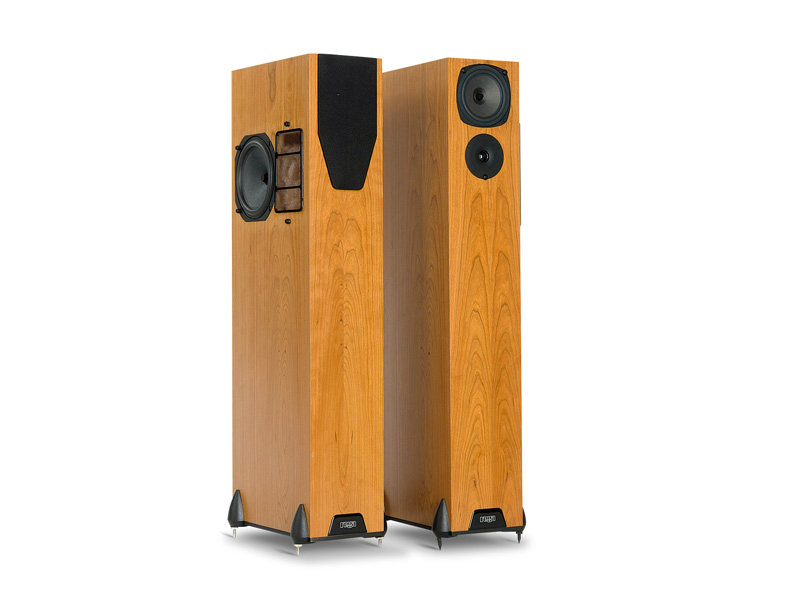TechRadar Verdict
Pros
- +
Lively and transparent
- +
Superior dynamic range
Cons
- -
Lacks some upper bass warmth, while midband is strong
Why you can trust TechRadar
The RS7 sits at the top end of Rega's loudspeaker range. We first reviewed these speakers in 2009, however the price per pair has increased since then from £1,469 to £1,685 (partly thanks to VAT changes) for the regular cherry or black wood-veneered versions; high-gloss black or white are also available at extra cost.
The front view of the sharp-edged enclosure is exceptionally slim, but the RS7 is also unusually deep and quite tall. Fore'n'aft stability is inherently excellent, while moulded outriggers improve the lateral stability and provide reasonably secure spike fixing, though the thumbwheel lock-nuts unfortunately loosen rather readily.
The three drive units are configured as a two-and-a-half way. The side-mounted 180mm bass-only driver with 130mm paper cone is loaded by a transmission line that exits next to the driver. This operates in parallel with a much smaller (130/90mm) front-mounted bass/mid driver, which sits above the 19mm fabric-dome tweeter in its own sealed enclosure, each bass driver helping reduce the fundamental resonance of the other.
By using an eight-layer voice coil, the bass driver has sufficient inductance to roll off naturally, without additional crossover components.
The tweeter is also unusual, as 16mm of its central pole piece is drilled-out and a shaped cavity has been created in order to minimise reflections and allow the diaphragm to operate in effectively 'free air'.
The two speakers are mirror-imaged so that the pair may be used with bass drivers facing inwards or outwards. Twin terminal pairs are conveniently fitted close to the floor.
Sound quality
The RS7 does have its flaws and limitations, for sure, but its good imaging, fine musical coherence and superior communication skills were more than sufficient to win over the panel, which voted this tall, slim but entirely invisible model 'best of the day' by a comfortable margin. Above all, it sounds busy and interesting, with a lot going on.
A major reason, one suspects, has much to do with the Rega's outstanding coherence and openness through the top half of the audio band – the upper midband and treble. It's truly exceptional here: no obvious colorations and impressive crossover integration together provide loads of musical information and fine communication.
Things are rather less happy through the lower half of the audio band. There was some disagreement, though, about the bass quality and although the majority approved of its weight and articulation, the one dissenter complained it could have been more agile with better definition.
That said, it packs a decent punch, it has a fine dynamic range and sounds much less 'one note' and resonant than the measurements tended to suggest, However, the upper bass and lower midband are rather too lean, so the overall sound balance lacks warmth and harmonic richness.
This particularly affects the sonic character of cellos and trombones, for example, which sound a little 'weedy' in consequence, while male voices are a little too 'thin'.
The RS7 undoubtedly has its idiosyncrasies, but it also makes listening to music fun and that, surely, is what good hi-fi is trying to achieve.
Follow TechRadar Reviews on Twitter: http://twitter.com/techradarreview
